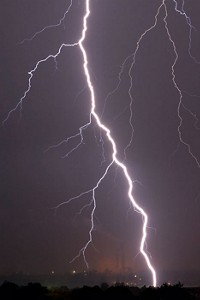Advertisement
Grab your lab coat. Let's get started
Welcome!
Welcome!
Create an account below to get 6 C&EN articles per month, receive newsletters and more - all free.
It seems this is your first time logging in online. Please enter the following information to continue.
As an ACS member you automatically get access to this site. All we need is few more details to create your reading experience.
Not you? Sign in with a different account.
Not you? Sign in with a different account.
ERROR 1
ERROR 1
ERROR 2
ERROR 2
ERROR 2
ERROR 2
ERROR 2
Password and Confirm password must match.
If you have an ACS member number, please enter it here so we can link this account to your membership. (optional)
ERROR 2
ACS values your privacy. By submitting your information, you are gaining access to C&EN and subscribing to our weekly newsletter. We use the information you provide to make your reading experience better, and we will never sell your data to third party members.
Physical Chemistry
Bubble Inferno
Acoustic cavitation is shown to yield a plasma, temperatures above 15,000 K
by RON DAGANI
March 7, 2005
| A version of this story appeared in
Volume 83, Issue 10

SONOLUMINESCENCE
Scientists have known for years that the gas inside a collapsing bubble can get so hot that it emits visible light, but they've only been able to theorize and guess at the temperatures involved. Now, chemists at the University of Illinois, Urbana-Champaign, have determined that the gas can get hotter than 15,000 K--roughly three times the temperature at the sun's surface--and that the gas is ionized (a plasma) (Nature 2005, 434, 52).
This is the first time that anyone has obtained strong experimental evidence for a plasma during acoustic cavitation, says chemistry professor Kenneth S. Suslick, who led the research.
In acoustic cavitation, a liquid is blasted with ultrasound, causing tiny gas bubbles to form, grow, and then collapse. Suslick and graduate student David J. Flannigan were studying single-bubble sonoluminescence (SBSL), in which a solitary bubble repeatedly expands and implodes, emitting flashes of light. The emission spectra from this process typically are featureless and reveal little about what is happening inside the bubble.
By using xenon- or argon-filled bubbles in concentrated sulfuric acid, Flannigan and Suslick were able to trigger SBSL several thousand times more intense than has ever been obtained with water. Even more strikingly, the spectra contained well-resolved spectral lines from atomic and molecular species. From the relative intensity of these lines, the researchers measured the temperature.
The chemists also observed excited states from both argon atoms and O2+ that they say cannot arise thermally. "We therefore conclude," they write, "that these emitting species must originate from collisions with high-energy electrons, ions, or particles from a hot plasma core."
In 2002, another lab reported highly controversial evidence that acoustic cavitation in deuterated acetone induces deuterium-deuterium fusion (C&EN, March 11, 2002, page 11). "Our results involve such a different set of experimental parameters that they can neither confirm nor deny" that earlier claim of fusion, Suslick tells C&EN. Although a plasma must exist for fusion to occur, there must also be neutron emission, and "we have not yet detected neutrons," he points out. Suslick is collaborating with another group to study SBSL in deuterated sulfuric acid.





Join the conversation
Contact the reporter
Submit a Letter to the Editor for publication
Engage with us on Twitter